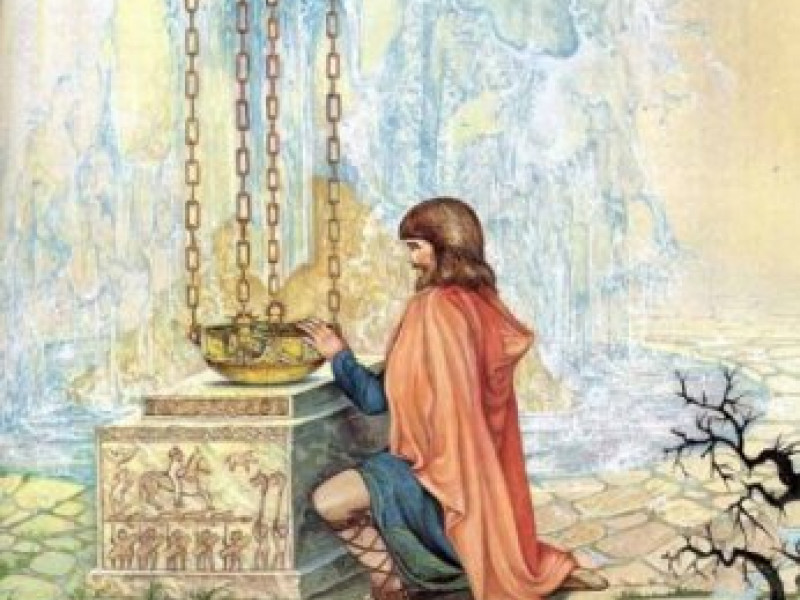Lludd and Llevelys
Britain was ruled by a king named Beli the Great, the son of Mynogan. Beli had four sons: Lludd (Nudd), Casswallan, Nynnyaw and Llevelys (Llefelys). When Beli died, Lludd, being the eldest, became king of Britain.
Lludd rebuilt the wall of London, which at the time was called Caer Lludd (Caer Llundein or Lwndrwys). Lludd was a great warrior, renowned for courage and skills in fighting, but he loved his youngest brother because Llevelys was wise. Llevelys became the king of France when he married the late king's (unnamed) daughter.
One day, Lludd discovered that Britain was suffering from three different plagues. The first plague was the arrival of people known as the Corannyeid. Lludd could not get rid of them, because they could hear every conversation in Britain. The second plague was a scream that could be heard at every May Eve. The scream would cause miscarriages among pregnant women, rendered young children unconscious, and made animals, trees and soil become barren. The third plague was just as puzzling. No matter how much provision was prepared in Lludd's capital, the food and wine would disappear.
Lludd could not figure out a way to be rid of the plagues, so he secretly arranged to visit his brother in France. The two brothers met, and Llevelys knew the solutions to his oldest brother's problems.
Following his wise brother's advice, Lludd gathered a large assembly of people. He crushed and mixed some bugs that his brother had given him with water. Lludd then threw the mixture upon everyone assembled, killing all of the Corannyeid without harming his people.
The second plague was two dragons fighting; a foreign dragon was attacking the native dragon, which was causing that scream that could be heard at every May Eve. Llevelys suggested that his brother find the exact centre of the isle (Oxford) and dig a pit at that centre, filling it with a vat of mead and covering the pit with a sheet.
The dragons would fight until they were weary. The dragons were transformed into two pigs as they fell into the vat. Once they drank the mead, they would fall asleep. Lludd had to confine the two dragons in a stone chest before the king could bury the chest at Dinas Emreis (previously known as Dinas Ffaraon Dandde).
Then Lludd was ready for the task of removing the third plague. It was a mighty magician (giant) who was stealing all of the food. The magician caused everyone at the feast to fall asleep. To overcome drowsiness, Llevelys advised his brother to prepare and dip himself into a vat of cold water whenever he felt sleepy.
When everyone was overcome by the sleep spell, Lludd immersed himself in a vat of cold water which kept him awake and alert. He saw the magician stuffing an enormous amount of food into a small magic bag. Lludd confronted and fought the giant before he could escape. Lludd spared the giant-magician only when the magician swore fealty to the king.
So Lludd ended the three plagues in Britain.
Related Information
Name
Lludd.
Llefelys (Welsh),
Llevelys (English).
Sources
Cyfrac Lludd a Llefelys ("The Meeting of Lludd and Llevelys") from the Mabinogion.
Related Articles
Lludd (Nudd), Beli the Great.
By Jimmy Joe



